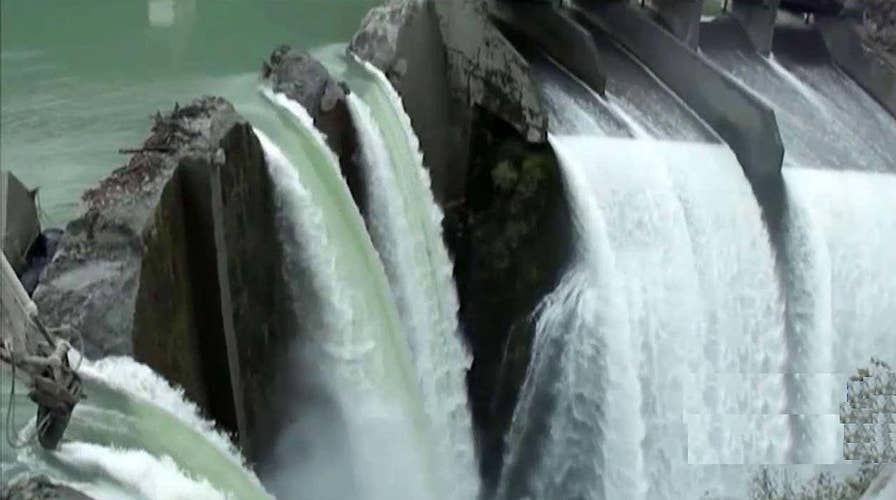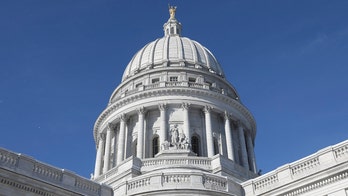While members of Congress enjoy their holiday recess, the clock is ticking on an issue that could bring the return of an ugly water war in the West.
First, the backstory:
The battleground is the 13,000-square-mile Klamath River Basin between southern Oregon and northern California. The listing of salmon and sucker fish under the Endangered Species Act in the 1990s touched off years of fighting over water rights, and anger boiled over in 2001 when the feds shut off water to farmers in the region, in a bid to help endangered fish.
Thousands protested, and the dispute appeared intractable. Court rulings and state government decisions on water rights only seemed to further muddy the waters.
Then something remarkable happened – a compromise. Indian tribes, irrigators, environmentalists, power company PacifiCorp, and local and federal officials eventually hammered out what’s known as the Klamath Basin Restoration Agreement (KBRA) in 2010.
The deal, at its core, set rules for sharing the water. And while it didn’t guarantee farmers all the water they want, especially in drought years, it did give them more certainty.
The Klamath and Karuk Tribes, which were granted senior water rights based on old treaties, agreed to take less water than they’re entitled to for the endangered sucker fish in exchange for extensive restoration of the Klamath River.
But here’s the rub: the centerpiece of that restoration has become so controversial in Congress it may send the KBRA down the drain.
“I never could have imagined that a bipartisan, locally driven solution to one of the most challenging natural resources in the country would fail to see congressional action,” said Chrysten Lambert of Trout Unlimited.
Critics of the deal, though, have real concerns. That’s because the KBRA calls for the removal of four hydroelectric dams on the Klamath River.
All told, the dams are 400 feet high and can produce 145 megawatts of carbon-free power – and taking them offline would make this the largest dam removal project in U.S. history, far exceeding the removal of the 210-foot Elwha Dam in Washington state in 2012.
Amid these concerns, Congress has not yet approved the KBRA -- and the deadline for congressional action is Dec. 31.
Oregon’s lone Republican member of Congress, Greg Walden, wrote a bill that would give 100,000 acres of federal forest land to local counties to be managed for timber revenue. The legislation is designed to compensate Siskiyou County in California and Klamath County in Oregon for the loss of tax revenue from the dams.
Yet Walden’s bill does not specifically mention dam removal.
He told Fox News taking out the Klamath dams would set a dangerous precedent.
“When all this started, some of the environmental groups said, ‘if we can do it here, we can do it on the Snake River and then, you know, on to Moscow,’” Walden said.
Several parties say if the KBRA is not approved by Congress, they will back out of the deal and take their chances in court as they challenge the federal re-licensing of the dams.
Don Gentry, vice chairman of the Klamath Tribe, had an ominous warning for farmers.
“All the gloves come off,” Gentry said, “Yes, there will definitely be shut offs to the agriculture community.”
It’s exactly the scenario long-time potato grower Bill Walker feared, even though he admits that for years he opposed the dam removal. Yet he now fears the uncertainty of no deal at all.
“We know it’s going to be a rougher road,” Walker said. “We just don’t know how rough it’s going to be.”
Greg Addington, director of the Klamath Water User’s Association, blames partisan politics in Congress. “We did the hard work, we handed it to them,” Addington said. “So it’s frustrating, we need them to do what we did. They need to get in a room, shut the door and work this thing out right now.”
Oregon’s two Democratic senators, Ron Wyden and Jeff Merkley, support the KBRA and the dam removal provision.
They have a bill stamping the KBRA’s approval, but it has never passed the full Senate.
“Time is running out and it’s urgent that Congress also set aside its differences and act to make local stakeholders’ vision a reality,” they said in a joint statement.
PacifiCorp, which owns all four dams in question, also supports the dam removal plan because it would limit the company’s liability during the removal process.
The company issued a statement last week when Congress went on recess without approving the KBRA: “We share the concern of many settlement parties that continued inaction could fracture the broad coalition that has chosen compromise over counterproductive confrontation and litigation on these difficult issues.”
Yet many county commissioners oppose the dam removal. For some, like Tom Mallams who chairs the Klamath County Board of Commissioners, dams are viewed as symbols of progress.
“It holds something for a lot of people,” Mallams said. “It shows a significant amount of taming the West, taming the rivers, using our natural resources for the betterment of mankind, not just for fish.”
Environmental groups and tribes disagree. They point to salmon runs that were stopped in 1917 when the first dam on the Klamath was built. They also argue that the four Klamath dams in question are not used to store water for farm irrigation, are not used for flood control and produce a relatively small amount of electricity.
According to PacifiCorp, the four dams account for about 2 percent of its capacity, enough to power 70,000 households.





